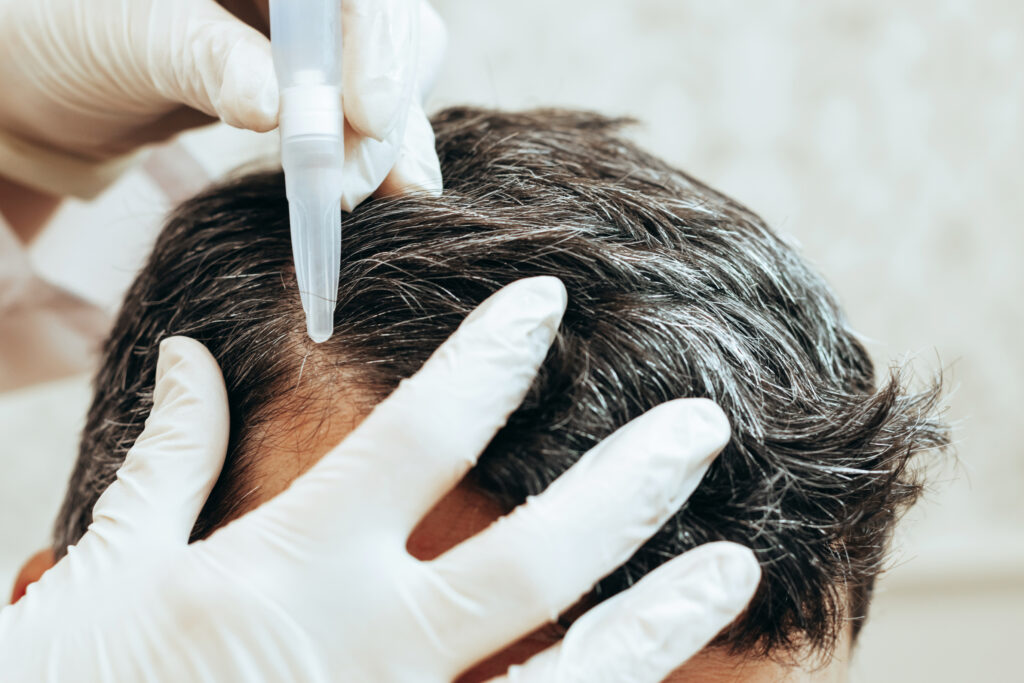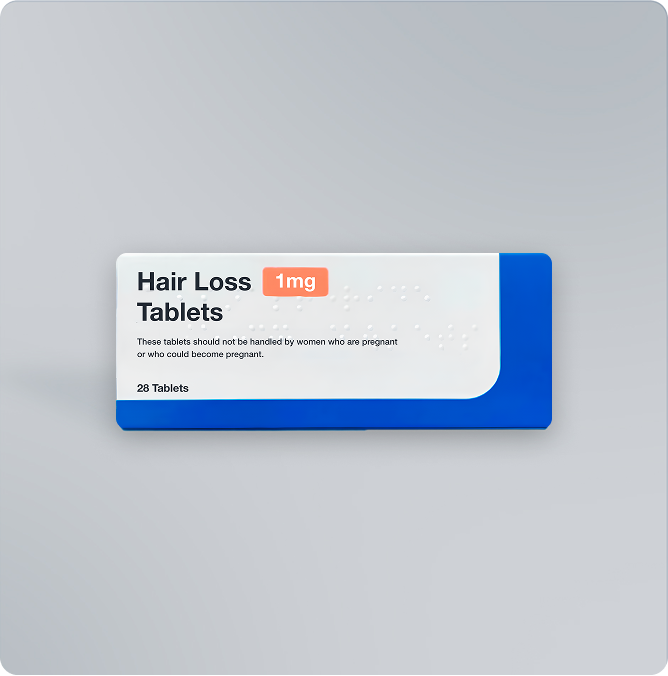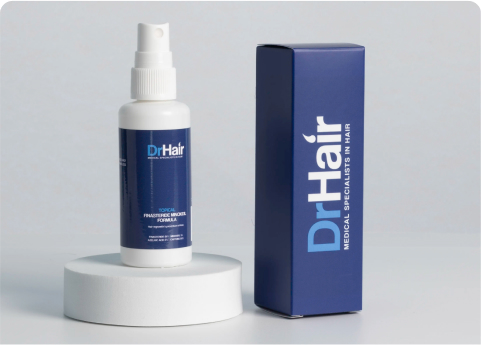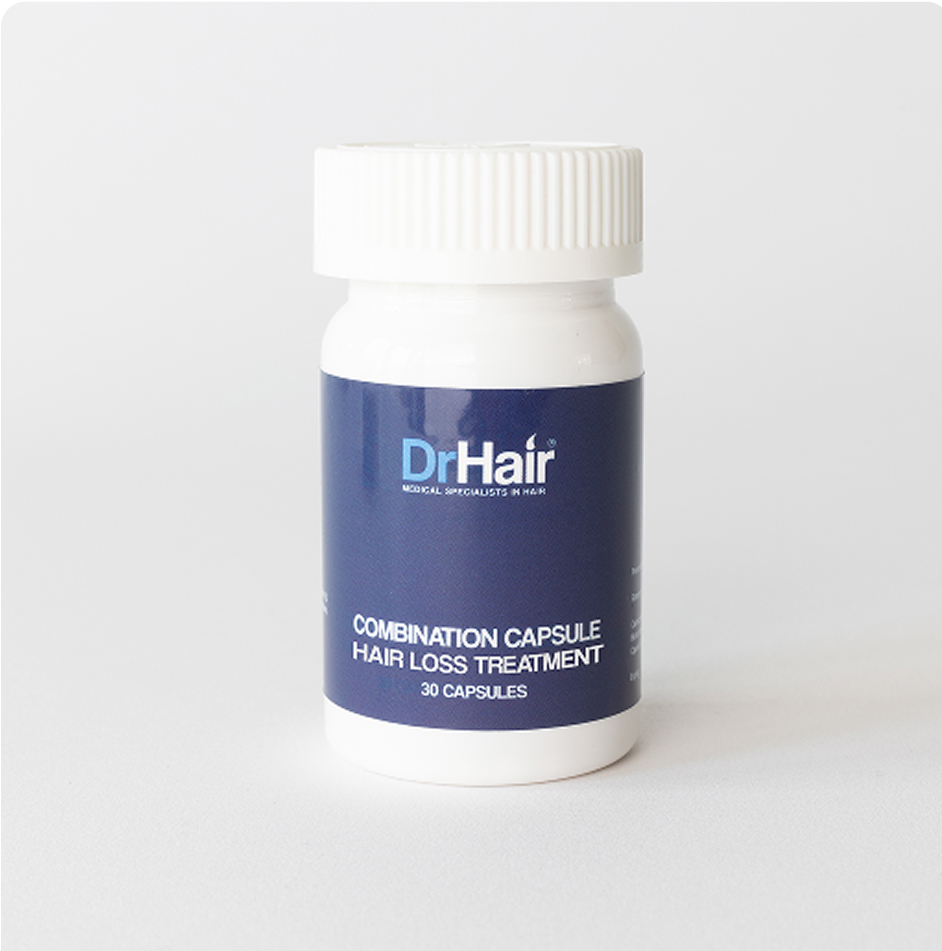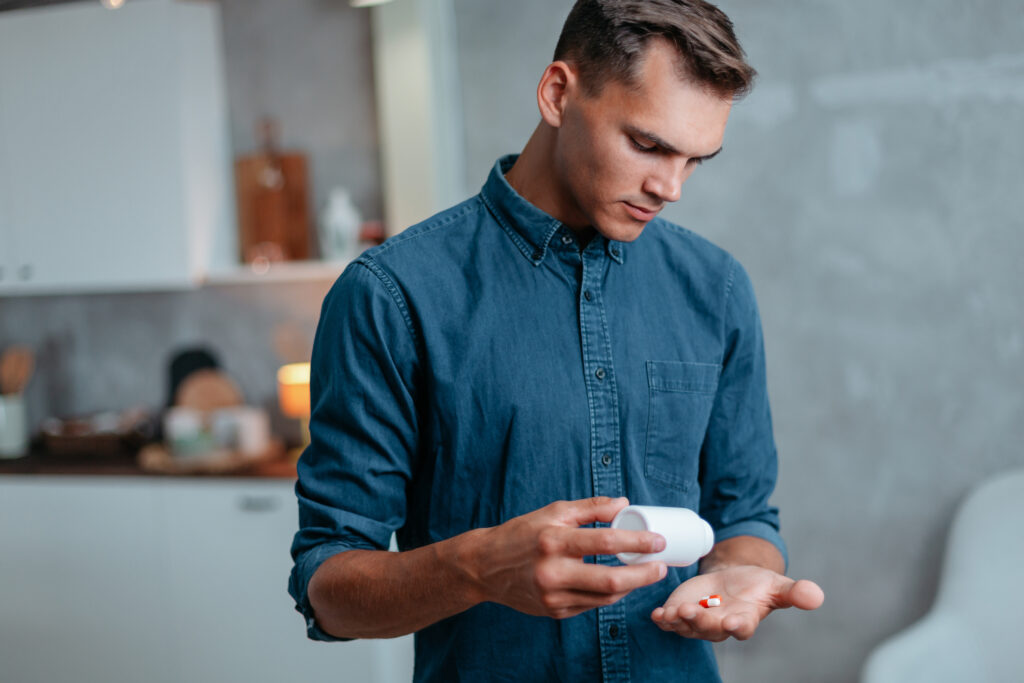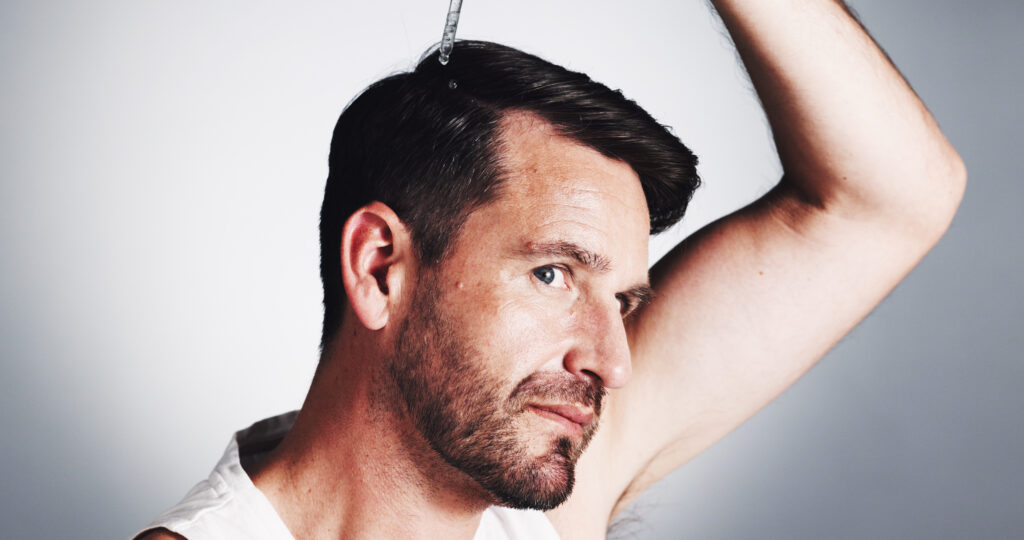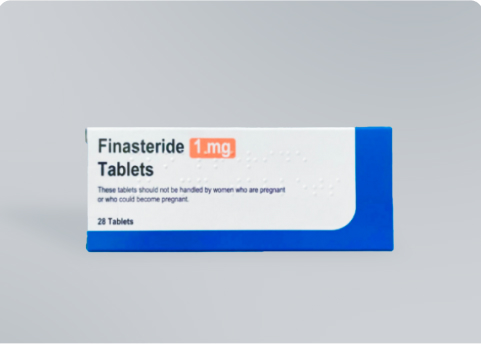Azelaic acid is an organic compound commonly used to treat skin complaints like acne and rosacea [1]. But recent research suggests azelaic acid can have serious benefits for your hair health, too — including hair growth [1-3].
DrHair’s 5% minoxidil formula contains 2% azelaic acid, since it’s been shown that combining these two ingredients may boost hair growth results [1, 4].
Here, you’ll learn everything you need to know about using azelaic acid for hair growth, including results, side effects, and how to use it.
Table of Contents
What is azelaic acid?
Azelaic acid is a skin-safe acid that occurs naturally in certain grains. It’s typically used to help even out skin tone and texture, particularly if you suffer from conditions that affect your skin, such as rosacea and lupus.
But azelaic acid can also help stimulate hair growth in a variety of hair loss conditions, including male pattern baldness, female pattern hair loss, and alopecia areata. So how exactly does azelaic help your hair?
How does azelaic acid affect hair growth?
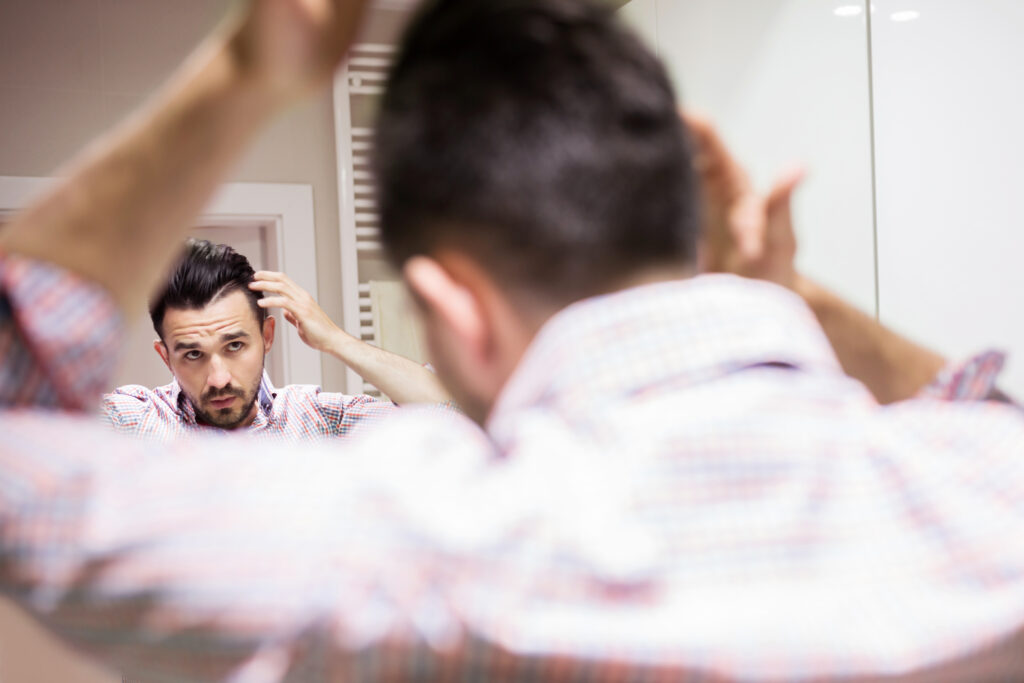
Some research indicates that azelaic acid can reduce activity of 5-alpha-reductase, the enzyme responsible for converting testosterone to dihydrotestosterone (DHT) [5]. In male pattern baldness, DHT binds to receptors in the hair follicles, forcing them to miniaturise and stop hair production. So reducing activity of this enzyme may result in decreased hair loss.
Animal studies provide some additional insights. One found that, when applied topically, azelaic acid triggered hair follicles to move from the resting phase to the growth phase of the hair growth cycle [6]. This effect is amplified when azelaic acid is combined with minoxidil, as minoxidil increases the flow of essential hair growth nutrients to the follicles.
In addition, azelaic acid may increase catalase activity within the hair bulge cells. The hair bulge and its stem cells are essential for regenerating the hair follicle and producing hair. Catalase is an enzyme that’s also involved in cell signalling and protecting cells from oxidative stress — a known contributor to pattern baldness, alopecia areata, and other hair loss conditions [7]. So by increasing catalase activity, azelaic acid may reduce oxidative stress and promote follicle cell proliferation.
Additionally, azelaic acid has anti-inflammatory properties. So it can be particularly beneficial if scalp inflammation is contributing to or worsening your hair loss. Alopecia areata, for instance, is often exacerbated by inflammation.
Side effects of azelaic acid
The side effects of topical azelaic acid are mild and generally uncommon. According to one study, the only side effect reported by more than one subject was mild skin itching [3]. One participant also reported skin scaling.
Another study found that combining azelaic acid with minoxidil resulted in the same side effect profile as minoxidil alone [4].
Are there any risks of using azelaic acid?
Azelaic acid has an excellent safety profile, with no known risks [8]. It’s generally safe for use in pregnancy, as well as for those with sensitive skin. However, if you’re unsure, we recommend speaking to your doctor to check your suitability before use.
Minoxidil with azelaic acid: what are the benefits?
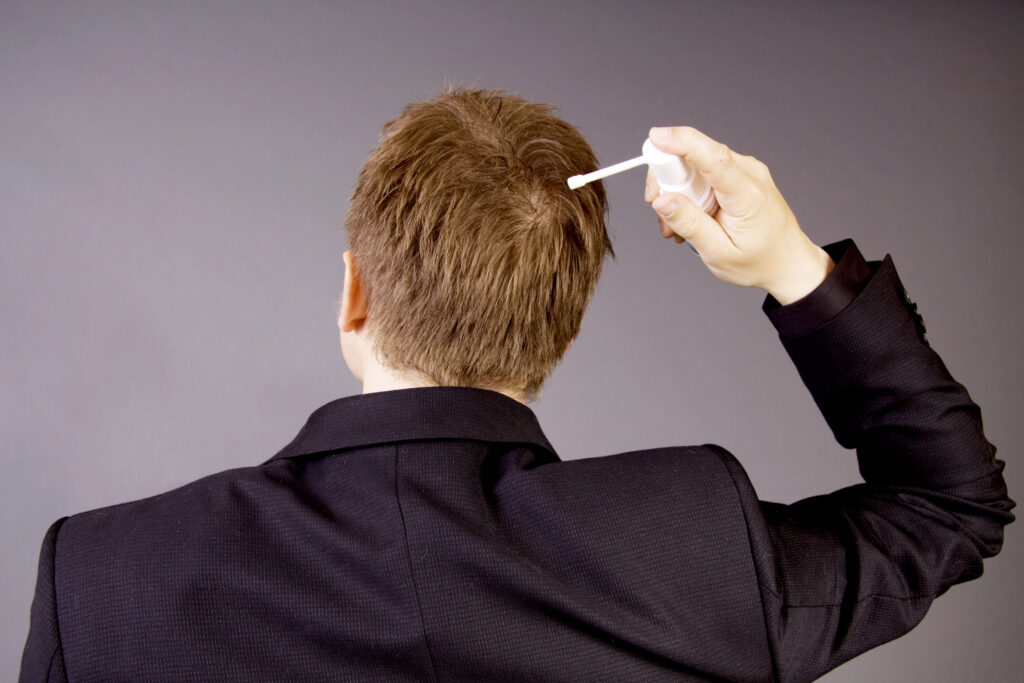
Both minoxidil and azelaic acid are effective hair loss treatments in their own right. But when combined, you may get better results than with either treatment on its own.
In addition, some researchers suggest there’s no greater risk of side effects when you combine minoxidil with azelaic acid [4]. So there’s really nothing to lose by trying a formula that contains both ingredients.
You can also safely enhance the effects of a solution that contains minoxidil and azelaic acid — such as DrHair’s minoxidil 5% formula — with certain other hair loss remedies. Topical and oral finasteride is generally safe for men to use alongside minoxidil, and can give you better, faster results.
Topical caffeine may also help improve the effects of an azelaic acid + minoxidil combination in those with male pattern hair loss [4].
How does azelaic acid affect beard growth?

There’s little research into the impact of azelaic acid on facial hair, but at least one study reports reduced coarse beard growth when using azelaic acid on the face [9]. This may not impact you if you use azelaic acid exclusively on the scalp.
This may happen because azelaic acid is said to block DHT production. DHT is a necessary hormone for facial hair growth, so restricting DHT production isn’t good for your beard.
Regrow your hair with an azelaic acid-infused minoxidil formula
Our 5% minoxidil formula contains 2% azelaic acid to help give you the best possible results with minimal side effects. With DrHair, you’ll also get:
- Fast assessment (get assessed in under 1 minute)
- The best minoxidil price online
- Hair loss treatments from the UK’s #1 hair loss supplier
- Discreet delivery
- Cheaper rates when you choose a monthly plan
Take a look at our hair loss products to find the right treatment to kickstart your hair growth.
FAQs
Learn more about azelaic acid and how it helps your hair in these frequently asked questions.
Azelaic acid is one of the most studied cosmetic acids for hair growth with positive results. Hyaluronic acid and glycolic acid may help reduce hair breakage, though there’s no evidence they can help with progressive hair loss conditions like male pattern baldness.
Because azelaic acid can block DHT, it can theoretically impact your facial hair growth. However, this is only likely to happen if you consistently apply azelaic acid to the face. Applying it to your scalp is unlikely to have an impact on your beard.
Yes, azelaic acid is suitable for both men and women in most cases. If you’re unsure, seek medical advice before use.
Yes. Azelaic acid is generally suitable for everyday use, even if you have sensitive skin. However, if you do notice any adverse reactions, it’s best to stop using the product.
